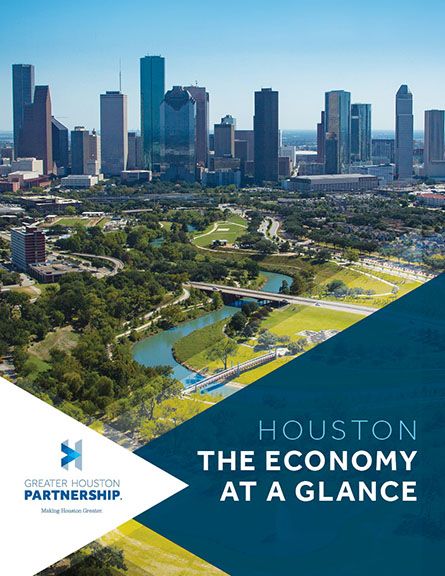Quarterly Update: Office Market
The Partnership sends updates for the most important economic indicators each month. If you would like to opt-in to receive these updates, please click here.
Estimated Reading Time: 2 minutes.
The Houston office market logged 260,703 square feet of net absorption in Q1/25, a sharp increase from the 730,867 square feet of negative net absorption logged in Q1/24. For the full year of ’24, net absorption was negative 1.3 million square feet. This pattern of fluctuating absorption has been a recurring trend for Houston, with negative net absorption recorded in four of the past five years and six of the last ten. Negative net absorption means more space was vacated than occupied.
Since Q1/15, net absorption in the Houston office market has averaged negative 204,596 square feet per quarter, reflecting consistent challenges in balancing demand and supply. This trend has contributed to a significant increase in available office space. The availability rate—which includes vacant, soon-to-be-vacant, and sublease space—was 19.6 percent in Q1/15. Over the past decade, persistent negative absorption has driven availability upward, reaching a peak of 28.4 percent in Q4/22, before declining to 26.4 percent in Q1/25.
Negative absorption over the last ten years has dumped a considerable amount of space onto the market.
By class, the breakdown of available office space is as follows:
- Class A: 41.7 million square feet
- Class B: 25.0 million square feet
- Class C: 1.8 million square feet
Given the current availability of space, the number of expiring leases, and historical absorption levels, the office market will face continued challenges in reducing vacancies to healthier levels. Since Q1/15, vacancy rates have steadily increased, peaking at 25.8 percent in Q1/25. While vacancy hovered around 25 percent throughout ’24, the market still has a long way to go before returning to pre-’15 conditions, when vacancy rates tracked below 15 percent. Significant positive absorption and new demand drivers are needed to help rein in vacancy levels.
Negative net absorption has prevented landlords from raising rents. Gross asking rent in Q1/25 was $28.74 and has remained between $27.96 and $30.16 since Q1 2015. Gross rents encompass taxes, insurance, maintenance, and rent paid to the owner. Adjusted for inflation, gross rents have decreased.
Office construction is constrained by the oversupply of space and lack of rent growth. ‘22 saw the least amount of new space—just over 1.0 million square feet—delivered to the market in the past ten years. Approximately 2.6 million square feet of space was delivered in ‘23, and 1.2 million square feet in ‘24.
Houston's construction pipeline has thinned out notably over the past few years. As of Q1/25, approximately 2.0 million square feet were underway, equal to 0.8 percent of Houston's total inventory of 257.0 million square feet—and less than half the 10-year average of 4.1 million square feet. Medical office projects accounted for 31 percent of total office space under construction in Q1/25, totaling just over 635,000 square feet. As of the first quarter, approximately 70.5 percent of space under construction was preleased, minimizing the impact of new supply on the broader market.
According to the Kastle Systems Back-to-Work Barometer, which tracks office entry card usage, Houston's office occupancy averaged 60 percent at the end of Q1/25. Austin and Dallas saw similar rates, while comparable metros reported occupancy levels between 40 and 50 percent.
When leases come up for renewal, tenants are scaling back their space needs or relocating to newer buildings and those with better amenities. At the end of Q1/25, the vacancy rate for newer buildings completed in the past 15 years averaged 15.1 percent compared to 28.3 percent in older, vintage buildings completed before ‘09.
Prepared by Greater Houston Partnership Research
Leta Wauson
Research Director
lwauson@houston.org
















